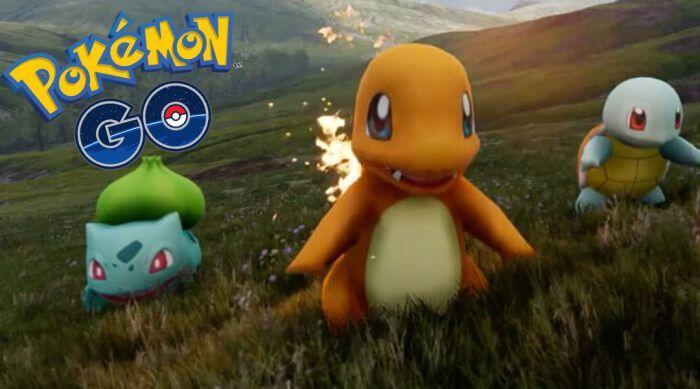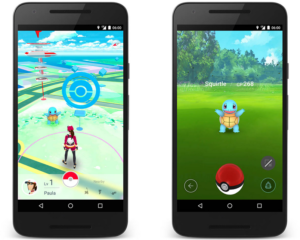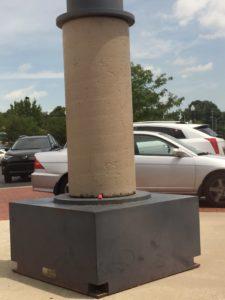If your social media feeds look anything like mine, then they are full of adults running around their cities looking for virtual animals to catch and other adults complaining about people running around their cities looking for virtual animals to catch. In an election season that has, to put it mildly, been a bit contentious, social media has become even more divided thanks to the recent release of the mobile app game Pokémon Go. The augmented reality game uses real world maps to encourage players to get out of the house and explore their surroundings to hunt for Pokémon to catch, train and then battle with other players.
Considering the popularity of Pokémon even before the mobile game was released — the Nintendo franchise has generated more than $46 billion worldwide — Pokémon Go was always going to be a successful venture. However no one could have anticipated the excitement being generated by the game, which has been estimated to be played daily by more than 21 million people. Pokémon Go players can find supplies and other special prizes and equipment at Pokéstops randomly scattered around the city, usually in public places, and battle other Pokémon at Pokégyms. Not only have most of the local businesses lucky enough to either be a Pokéstop or be adjacent to one benefited financially, but parks, landmarks and other public spaces have also seen massive spikes in foot traffic.

Gotta catch ’em all. Then make them fight each other. And sell your excess Pokémon to a “scientist” for some candy.
While the merits of adults playing a Pokémon game may be a hotly debated topic, in my view there are very few viable arguments against a game that encourages people to get out of the house, get exercise, explore their city and socialize with strangers. The game also has also found itself a great vehicles to lure in players to experiences and ideas that they may not have had a lot of exposure to. Social groups are using it to draw in new members, churches are using it to bring people back to the church and activists are using it to spread their messages. It is as if the game has, in only a matter of days, evolved into a delivery platform for those willing to engage with players rather than ridicule them.
Last week Matthew Beaman, a Pokémon Go player and 3D printing enthusiast, decided to use the high traffic at local Pokéstops as an excuse to put some smiles on players faces and promote 3D printing at the same time. He 3D printed several of the classic Low Poly Pokémon models and left then around his local Pokéstops for wandering trainers to find. He also created the hashtag #Pokeprint that has started to get some heat behind it. Lots of people have joined in, 3D printed a bunch of Pokémon-themed models and printed up small slips of paper encouraging folks to tweet when they find their real life Pokémon in the world.
- via Twitter user @JimScuba2386
- via Twitter user @zervin
- via Twitter user @zervin
The #Pokeprint hashtag has also found its way into the mainstream media as local 3D printing experts use it to generate excitement and get people out looking for their 3D printed models. Even Orange County, California-based 3D printing company Matterhackers has gotten in on the fun by leaving 3D printed Pokémon laying around high-traffic Pokéstops with attached coupons for their products and services.
Find our Chikorita #pokeprint at the “Giant Wheel” gym and get $5 off your next roll of filament! #PokemonGO pic.twitter.com/s7LJ5bceL2
— MatterHackers (@MatterHackers) July 17, 2016
Another chance to get $5 off your next roll! Catch our Tododile #pokeprint at Irvine Spectrum Fountain #Pokestop. pic.twitter.com/dmZtYeGfiL
— MatterHackers (@MatterHackers) July 17, 2016
It isn’t everyday that a video game can be cited for being beneficial to both those choosing to play the game, and those who unintentionally find themselves part of the experience. While there have been a handful of stories here and there about players going places that they shouldn’t, and wandering into dangerous situations, the overwhelming interactions between players and everyone else has been positive. My experiences are purely anecdotal, however whenever I have come across a group of players they have not only been friendly and courteous to those not playing, but more than willing to explain what everything is about to the curious.
I was out to dinner at a casual restaurant last night next to a Pokéstop, and not only were a majority of the guests players of the game, I saw them explaining it to several fellow patrons who ended up downloading the game for themselves. I have already dropped off some 3D printable treats at a few local Pokéstops, but it had completely slipped my mind to bring some with me to leave behind, a mistake that I won’t be making again. Not only is it a great way to get people talking about 3D printing, but it is a great way for all of us in the industry to join a national conversation.
If you want to join in on the Poképrint fun, then here is a collection of free Pokémon Go-themed 3D printable models that I put together this weekend. Happy Pokéhunting! Are you a fan? Discuss over in the Pokémon Go Fan Leaves 3D Prints forum over at 3DPB.com.
Subscribe to Our Email Newsletter
Stay up-to-date on all the latest news from the 3D printing industry and receive information and offers from third party vendors.
You May Also Like
Further Understanding of 3D Printing Design at ADDITIV Design World
ADDITIV is back once again! This time, the virtual platform for additive manufacturing will be holding the first-ever edition of ADDITIV Design World on May 23rd from 9:00 AM –...
3D Printer Maker EVO-tech Reborn as NEVO3D — Once More With Feeling
EVO-tech was a 3D printing service and original equipment manufacturer established in 2013 and based in Schörfling am Attersee, Austria. The company produced high-quality material extrusion systems featuring linear bearings,...
3D Systems Brings 3D Printed PEEK Cranial Implant to the U.S. with FDA Clearance
For more than 10 years, 3D Systems (NYSE:DDD) has worked hand-in-hand with surgeons to plan over 150,000 patient-specific cases, and develop more than two million instruments and implants from its...
CDFAM Returns to Berlin for Second Annual Symposium
The second CDFAM Computational Design Symposium is scheduled for May 7-8, 2024, in Berlin, and will convene leading experts in computational design across all scales. Building upon the first event...




































